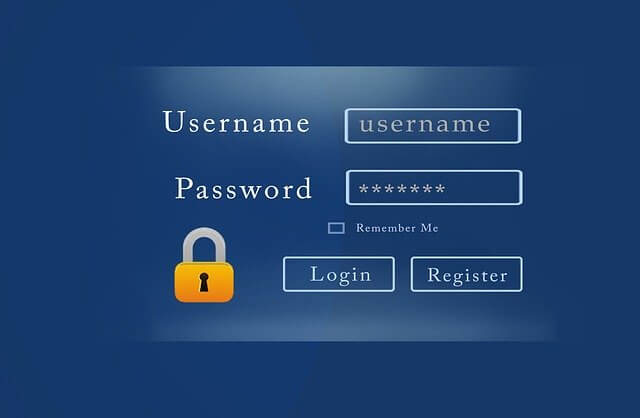 Each year ushers in new cyber security threats and technology challenges. Old IT security practices are no longer viable for protecting businesses against malicious attacks and system compromise.
Each year ushers in new cyber security threats and technology challenges. Old IT security practices are no longer viable for protecting businesses against malicious attacks and system compromise.
Cyber crime knows no boundaries and everyday, hackers are looking for every available option to discredit brands and make their mark, whether it be via easy targets or sophisticated business system compromise.
Businesses of all sizes are prone to cyber attacks and securtity threats are increasing at an alarming rate and in the first half of 2019 alone, there were atleast 4.1 billion business data records exposed.
These attacks are real, yet not many companies are aware of how to prevent cyber security threats from affecting their business in 2024 and beyond.
\With mobiles phones and IoT devices becoming lucrative targets for security attacks, it is important to know how best to prevent cyber security threats affecting your business in 2020 and beyond.
Statistics shows that many companies don't an up-to-date or active cybersecurity strategy in place. In some cases, there is no strategies whatsoever. Believe it or not, this can be a major problem, given that the cost of a single cyber attack can be high enough to put an organisation out of business for good.
With more businesses making use of internet conectivity services daily, there are already indications that cyber security compromise trend will continue to increase year-on-year. So, how do you protect your business against cyber security attacks?
Cyber Security Concepts Worth Knowing About
Before deep diving into how to prevent cyber crime affecting your business, it is useful to highlight some interesting concepts that's worth knowing:
Cyber crimes are targeted attacks by hackers who are keen on breaking into computer systems via unauthorized access in order to steal data, destroy systems or alter application performance to preserve backdoor access for the future.

Cyber crimes are carried out by script kiddies or organised online syndicates to either gain insight, leverage competitive advantage, blackmailing, stealing data or damage reputation.
With more devices connecting to the internet and sharing business system access daily, cyber attackers are actively targeting system security loopholes and application vulnerabilities more aggressively.
Having firewalls alone doesn't protect your organisation from the risk of cybersecurity threats - carefully crafted strategic solutions and strong governance are also required for bullet-proof cyber resillience.
How Do System Passwords Get Hacked?
Application and system passwords are stored using special algorithms called “hashing.” Password hacks can be executed via numerous techniques but the most popular approach to date is achieved by using “dictionary attacks”.
 Dictionary attacks involves using brute force to strike and decipher user authentication details, decryption key or passphrase from targeted hosts. Systems or applications are bombarded by millions of password possibilities with the aim of finding a matched instance from words contained within a dictionary word set.
Dictionary attacks involves using brute force to strike and decipher user authentication details, decryption key or passphrase from targeted hosts. Systems or applications are bombarded by millions of password possibilities with the aim of finding a matched instance from words contained within a dictionary word set.
With software hacking tools becoming more readily availble, this type of cyber attack can be automated and carefully executed against targeted hosts to achieve results faster than manual efforts. In some cases, weak passwords can be cracked by malicious attacks in less than 3 minutes, so it is possible for a cybersecurity compromise to occur before the underlying threat is even realised. This can happen on both Apple Mac and Windows computers, so being vigiilant about secuirty threat is important for everyday living.
Malware is another password hacking technique used to compromise systems and user password. With Malware attacks, a keylogger or screen scraper is installed on the target system to record screenshot at login or keystrokes typed. A copy of the captured file is forwarded to the hacker's central monitoring station.
The number of computers and portable devices connecting and exposing business logic via online service interactions are increasing rapidly, making it much easier for malware attacks to derail poorly configured systems via cyber security breaches.
Address Security Risks and Make Your Business Safe From Cyber Threats
Now there is some clarity and better understanding of how technology changes and password compromise can enable cyber crime to affect your company, let's look at practical measures and strategies that can help to mitigate business systems risks and reduce cyber security threats.
- Identify and Monitor Security Threats
Identify and address security threats and unauthorized access to your system and business data. Installing an effective security solution can make a difference between having a healthy system and one that can be easily hijacked by malicious software, virus or trojans. There are many software security providers offering antivirus solutions and security suite that includes firewall. It is important that the degree of protection provided by security solutions are fit for your business since some software can be limited in threat detection and quarantine functionalities.
It is recommended that login attempts are logged, with failed access monitored and assessed to determine threat level. Most Windows and Apple Mac systems include useful log functionalities that can help to capture and track login concerns in volatile environment. With the right IT Spport comapany to help with implmentation, you are can start taking steps towards addressing cyber security threats for your business.
- Implement Two-Factor Authentication
Cybersecurity threats can be mitigated through the use of two-factor authentication for application login attempts. With two factor authentication, username and password login details are complemented by system generated code sent to a smartphone or mobile device. Only the intended user would have access to the device and able to receve the unique code. This double authentication approach discourage hacking attacks for systems that would otherise be easy target via username and password compromise.
Encouraging employees to use two-factor authentication as an added layer of security is an excellent strategy for preventing cyber crime affecting your business in 2020.
- Conduct Periodic System Audit and Address Security Vulnerabilities
Ask yourself how important security is to your business and try to answer each by using the what, where, how, when and why approach... You'll be amazed that security is actually the single over-acrhing factor that keep your business going in this new technology age.
According to the National Cyber Security Alliance "Nearly 60% of small businesses that are victims of cyber crimes closed permanently within 6 months of an attack".

As your company grows there comes a point where security can no longer be taken likely. With the intorduction of GDPR, brand reputation and strategic business data now held on systems, it is more important to identify areas of cyber risks and minimize threat exposure.
But, is it really possible to gain insight about your IT environment, system application landscape and data points? The answer is, certainly yes! For this strategy to work, it is necessary for a full system audit to be carried out.
This assessement can identify hardware and software vulnerabilities, as well as security concerns and threat levels for prioritisation. Depending on the nature of your business, internet bandwidth and IT security policy, it may prove necessary to implement a system audit for either monthly, quarterly or yearly execution.
- Encrypt Your Data for Improved System Security
Data encryption is an effective security strategy for cyber threat prevention. Encrypted data is converted into another format and in so doing creates a public and private (secret or decryptionkey) keys. Only people with access to the secret key password can read or change the data.
Encrypting organisation data can be used to protect it during transit or at rest and thererfore can help to mitigate the risk of a security breach or malicious attacks.
- Train Staff About Cyber Security and Digital Hygiene Awareness:
Don’t use the same password on multiple accounts. Don’t follow links in email. Learn to spot phishing threats. Make sure everyone on your staff knows this stuff, and remind them often.
In Concluding...
Cyber security is an evolving landscape and although the above measures highlight numerous threats and counter measures, these are by no means the end of the game. It is important that every actively trading business assess and take steps to incorporate strategies that help protect their brand reputation and data in 2020 and beyond.
How Mature is Your Information Technology Landscape and Data Security Strategy?
Cybersecurity is at the heart of everything we do for our clients. Let us help you implement a successful data loss prevention strategy with compliant cyber security solutions that make technology work for you. Get in touch with our Security Solution Specialists to discuss your cyber security requirements and get started today.
